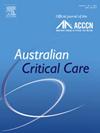新生儿感染性休克研究的结果报告:一项系统综述
IF 2.7
3区 医学
Q2 CRITICAL CARE MEDICINE
引用次数: 0
摘要
目的新生儿感染性休克是一种危重疾病,需要立即进行个体化干预。尽管进行了广泛的研究,但不同研究的结果报告存在显著的异质性,这可能导致研究结果的不可比较性,并限制了证据的合成。本系统综述的目的是识别和分析关注新生儿感染性休克干预措施的研究报告的结果,为制定核心结果集提供信息,为未来的研究和实践标准化结果报告。方法:我们按照有效性试验的核心结果测量倡议框架和系统评价和荟萃分析指南的首选报告项目进行了本系统评价。我们系统地检索了PubMed、Embase (Ovid)和Cochrane Library,涵盖了截至2024年9月的所有记录。四名独立审稿人进行文献筛选和数据提取,另外两名审稿人达成共识解决分歧。将提取的结果及其定义进行标准化,并使用38项标准化分类法将其分类为核心领域和领域。结果从7139条记录中,纳入了25项研究,涉及4957名新生儿,得出136个结果。合并后,根据已建立的分类,确定了66个独特的结果,并将其分为四个核心领域。最常报道的领域是生理/临床结果(72%,25项研究中有18项),包括32项结果。其次是死亡(68%,17/25)、资源使用(48%,12/25)和不良事件(36%,9/25)。此外,在纳入的研究中没有测量与生活影响相关的结果。结论:本综述显示新生儿感染性休克研究结果报告存在相当大的异质性,并强调缺乏生命影响指标。这些发现支持需要制定标准化的核心结果集,以提高结果报告的一致性和临床相关性。本文章由计算机程序翻译,如有差异,请以英文原文为准。
Outcome reporting in neonatal septic shock studies: A systematic review
Objectives
Neonatal septic shock is a critical condition requiring immediate and individualised intervention. Despite extensive research, there is a significant heterogeneity in outcome reporting across studies which may lead to incomparability of study results and limit evidence synthesis. The aim of this systematic review was to identify and analyse outcomes reported in studies focussing on interventions for neonatal septic shock to inform the development of a core outcome set to standardise outcome reporting for future research and practice.
Methods
We conducted this systematic review following the Core Outcome Measures in Effectiveness Trials initiative framework and Preferred Reporting Items for Systematic Reviews and Meta-Analyses guidelines. We systematically searched PubMed, Embase (Ovid), and the Cochrane Library, covering all records until September 2024. Four independent reviewers performed literature screening and data extraction, with disagreements resolved by consensus among two additional reviewers. Extracted outcomes and their definitions were standardised and categorised into core areas and domains using a 38-item standardised taxonomy.
Results
From 7139 records, 25 studies involving 4957 neonates were included, yielding 136 outcomes. After consolidation, 66 unique outcomes were identified and classified into four core areas based on the established taxonomy. The most frequently reported area was physiological/clinical outcomes (72%, 18 of 25 studies), encompassing 32 outcomes. This was followed by death (68%, 17/25), resource use (48%, 12/25), and adverse events (36%, 9/25). In addition, outcomes related to life impact were not measured in the included studies.
Conclusions
This review demonstrates considerable heterogeneity in outcome reporting across neonatal septic shock studies and highlights the absence of life impact measures. These findings support the need for developing a standardised core outcome set to enhance outcome reporting consistency and clinical relevance.
求助全文
通过发布文献求助,成功后即可免费获取论文全文。
去求助
来源期刊

Australian Critical Care
NURSING-NURSING
CiteScore
4.90
自引率
9.10%
发文量
148
审稿时长
>12 weeks
期刊介绍:
Australian Critical Care is the official journal of the Australian College of Critical Care Nurses (ACCCN). It is a bi-monthly peer-reviewed journal, providing clinically relevant research, reviews and articles of interest to the critical care community. Australian Critical Care publishes peer-reviewed scholarly papers that report research findings, research-based reviews, discussion papers and commentaries which are of interest to an international readership of critical care practitioners, educators, administrators and researchers. Interprofessional articles are welcomed.
 求助内容:
求助内容: 应助结果提醒方式:
应助结果提醒方式:


